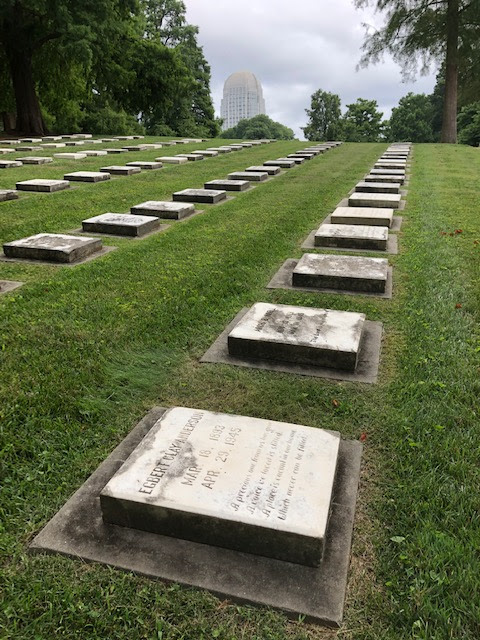A Moravian Cemetery: Where Death Is the Great Equalizer
 |
| God's Acre in historic Old Salem lies the shadow of modern day Winston-Salem |
While visiting family this summer, I explored the historic Salem Moravian Graveyard, referred to as "God's Acre." (Who are the Moravians? Keep reading!) Gods Acre covers more like 40 acres, but in this case "acre" is from the Old High German word meaning field. This historic cemetery now lies in the shadow of modern day Winston-Salem.
 |
| God's Acre Entrance |
 |
| The many identical rows in God's Acre |
What is initially striking about this cemetery is the complete lack of anything striking. In contrast to most cemeteries, no one is striving to stand out among the rest. There are no obelisks for the rich, no handmade vernaculars for the poor, no vaults, no crosses, no curbing or fencing. God's Acre is divided into squares of row upon row of identical white marble gravestones. All adult markers are 20" x 24" x 4" (children's markers are slightly smaller). Each stone contains only the name of the deceased, birth and death dates, and maybe a short scripture verse.
 |
| Samuel of Silesia buried among the other married males |
 |
| adjacent historic Salem Cemetery |
Another distinguishing tradition among the Moravians is that there are no individual family plots. The cemetery is divided into large squares where people are buried chronologically by the "choir system" of Saxony. This system divided a congregation into groups according to age, sex and marital status. When a Moravian dies, they are buried with other members of their group (children, married men, married women, widows, etc.).
 |
| "Little Freddie" one of many youngsters in the children's section |
As followers of Jan Hus, a Bohemian heretic who was burned at the stake in 1415, the Moravians are acknowledged as the earliest Protestants. Hus is considered the first church reformer predating Martin Luther by a century.
In 1735, Moravian missionaries left Germany for North America. In 1753, 15 Moravians walked from Pennsylvanian to North Carolina and founded the settlement of Bethabara, what is today Winston-Salem. The first person to be buried in God's Acre was John Birkhead in 1771. Since that time, 7,000 Moravians have been buried in God's Acre and continue to be buried there today.
I have not observed death to be "the great equalizer" in most cemeteries. However, it does seem to be the case in Salem's God's Acre. The Moravian burying practices reflect the tenants of their faith: humility, consistency and simplicity. They believe all people to be equal in God's eyes and want that reflected in their cemetery. Instead of individual family plots, they are buried in one large family plot.
Text and Photos by FPAN Staff: Robbie Boggs